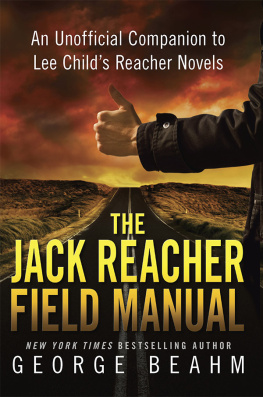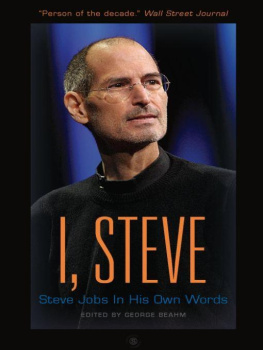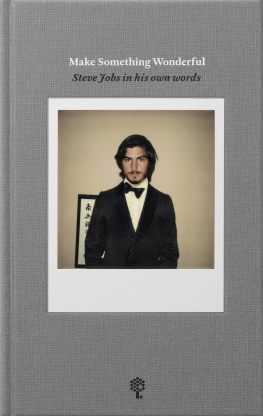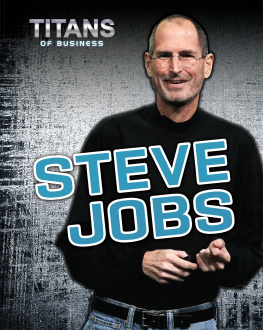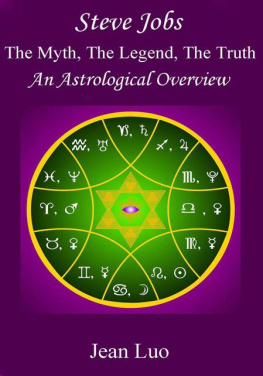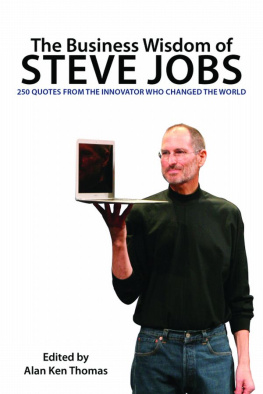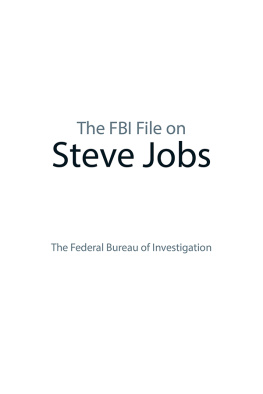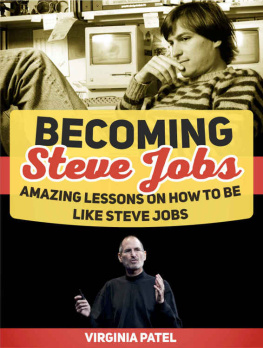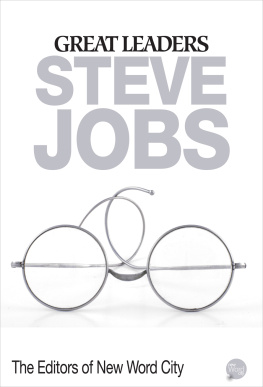Steve Jobs Life By Design
Steve Jobs Life By Design
Lessons To Be Learned from His Last Lecture
The Most Popular
Graduation Address in History
George Beahm

The author and publisher have provided this e-book to you for your personal use only. You may not make this e-book publicly available in any way. Copyright infringement is against the law. If you believe the copy of this e-book you are reading infringes on the authors copyright, please notify the publisher at: us.macmillanusa.com/piracy.
STEVE JOBS LIFE BY DESIGN
Copyright George Beahm, 2014.
All rights reserved.
For information, address St. Martins Press, 175 Fifth Avenue, New York, N.Y. 10010.
First published in 2014 by PALGRAVE MACMILLAN in the United Statesa division of St. Martins Press LLC, 175 Fifth Avenue, New York, NY 10010.
ISBN: 978-1-137-27983-5
Our eBooks may be purchased in bulk for promotional, educational, or business use. Please contact the Macmillan Corporate and Premium Sales Department at 1-800-221-7945, ext. 5442, or by e-mail at .
Library of Congress Cataloging-in-Publication Data
is available from the Library of Congress.
A catalogue record of the book is available from the British Library.
Design by Letra Libre Inc.
First edition: May 2014
10 9 8 7 6 5 4 3 2 1
Printed in the United States of America.
Apple, at the core, its core value, believes that people with passion can change the world for the better.
Steve Jobs
Think different.
Apple ad
To Mary,
tibi magno cum amor
Contents
Acknowledgments
A book is a team effort, and these are the people who helped me get the ball to the end zone: my literary agent, Scott Mendel, who challenged me to write another book on Steve Jobs; my wife, Mary, who was my sounding board on this project; and at Palgrave Macmillan, my editor, Karen Wolny; her editorial assistant, Lauren LoPinto, who kept the ball in motion; Alan Bradshaw, production, who shepherded the book; Abimbola Oladipo, production assistant; and Rachel Lodi in the publicity department.
I am especially grateful to the eagle-eyed Debra Manette, who copyedited the manuscript, and measurably improved it.
Thank you, all.
Introduction
Steve Jobs Three Stories
Jobs was not a rousing orator. He looked nervous as he approached the podium. As he spoke, though, his voice gained the strength of someone who knows that what hes saying is both true and very important. And something unusual happened: we all started paying attention.
We still are.
Sheena Chestnut Greitens, Stanford class of 2005
Barefoot Hippie Turned Billionaire
A n estimated 23,000 people packed the stadium on June 11, 2005, for Stanford Universitys 114th commencement.
The unconventional keynote speaker, dressed in the traditional black robe and cardinal-color hood, wore sandals and blue jeans underneath.
He graduated from high school with mostly Cs and Bs and a cumulative grade point average of 2.65. He dropped out of college after six months. He came of age in 1975, just as the Vietnam War ended. He rejected Christianity to embrace Zen Buddhism. He neither chased money for its own sake nor sought famebut both came to him in large measure.
This barefoot hippie became a multibillionaire, a highly respected CEO, and one of the most famous people on the planet. He was especially admired by young people who considered him to be an inspirational figure, a rock star in his own right. It was his success, especially his comeback act at the company he cofounded, that earned him the privilege of sharing his lifes lessons with Stanfords graduating class.

President John Hennessy warmly welcomed the assemblage. He was followed by Provost John Etchemendy for the presentation of awards. Then Hennessy returned to the podium to introduce the beaming fifty-year-old man with a sheaf of papers and an iPhone in hand.
Though the keynote speaker was never formally a student at Stanford, it was a second home to him. He enjoyed walking around its beautiful campus. Hed spoken to its Graduate School of Business, where he always found a ready audience. Hed also had surgery to remove part of his pancreas at the universitys medical center. And Stanfords burgeoning Apple Computer collections held hundreds of boxes of documents from his company that formed a nucleus supplemented by artifacts, documents, and memorabilia from other sources.
The commencement speakers prepared text ran exactly 2,250 words, which he delivered in twenty-two minutes. It covered three major themeslife, love, and deathcorresponding to the beginning, middle, and the end of his life.
He deliberately used the storytelling mode, because people listen to stories; he wanted to make sure they listened. Lectures and speeches? Not his style. He always preferred to engage the audience.
The famous figure was Steve Jobs, and the stories he toldall the more powerful because of their simplicitystruck a responsive chord with the audience and reverberated worldwide.
After Stanford posted it online, in video and print form, Jobs address went viral. The streaming video went on to become the most watched commencement address in history with 26 million viewers worldwide.
The commencement address itselfintuitive, simple, and directwas pure Steve Jobs. He solicited feedback from his wife, Laurene, but otherwise wrote it himself. Spun gold, it is a web of words that holds our attention and captivates our minds. All the worlds a stage, but he was a player who commanded attention: Nobody could do it better.
A man who zealously guarded his privacy, who rarely talked about personal matters in public, Steve Jobs spoke from the heart and, in the process, left an indelible impression on our own hearts.
He did what he does besthe simplified... and delivered an insanely great commencement address. Infamous for his reality distortion field, Jobs did not need to employ it on that day. He simply told of lifes joys and sorrows, and that was enough.
Jobs address can be taken as his last lecture. As the late Randy Pausch wrote, the last lecture
has become a common exercise on college campuses. Professors are asked to consider their demise and to ruminate on what matters most to them. And while they speak, audiences cant help but mull the same question: What wisdom would we impart to the world if we knew it was our last chance? If we had to vanish tomorrow, what would we want as our legacy?
Jobs, who knew he was living on borrowed time, had surely been asked to give commencement addresses over the course of his career, but this was the only one he gave.
Six short years after Jobs gave that commencement address, he died.
He was fifty-six years old.

In Steve Jobs, biographer Walter Isaacson compared Jobs to inventors Edison and Ford. Those are fair comparisons, but Jobs was principally a visionary; thus, Jobs is similar to Walt Disney in that respect. Disney pioneered Imagineering, the art of combining imagination with engineering; he created the first full-length animated films, and amazed us all; and he gave us unforgettable consumer experiences at his theme parks around the worldcharacteristics Jobs also encompassed.
Its a small world, after all, and in retrospect, it seems fitting that the Walt Disney Company, the distributor of Pixars movies, would later consolidate operations and buy the company outright.
Next page




